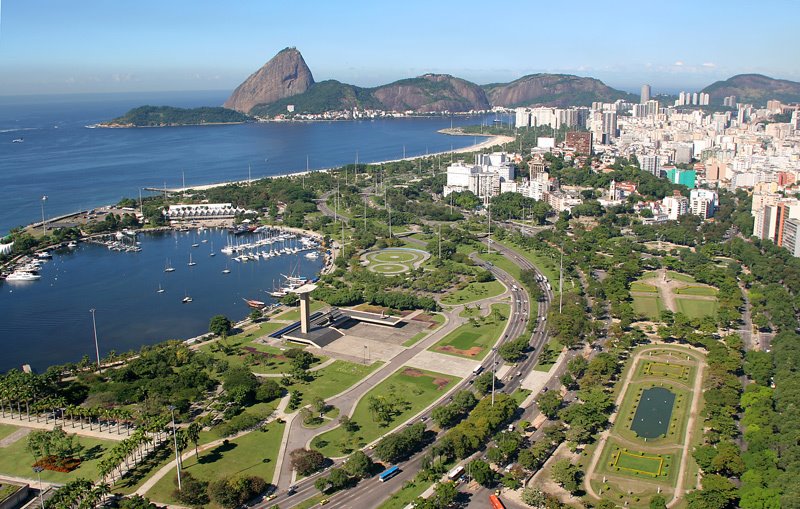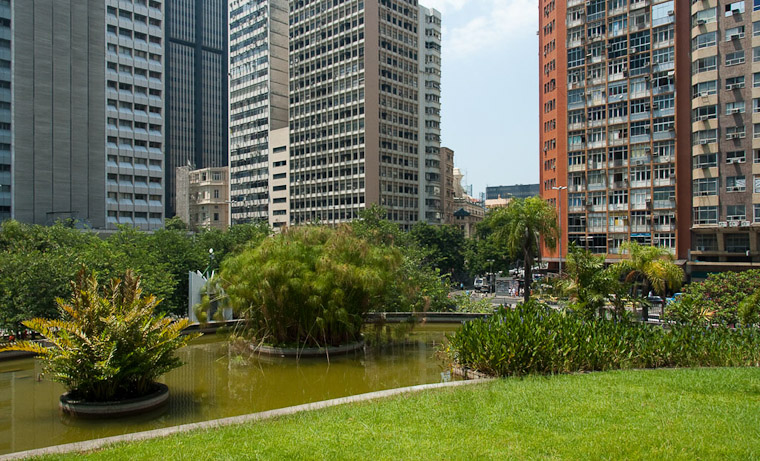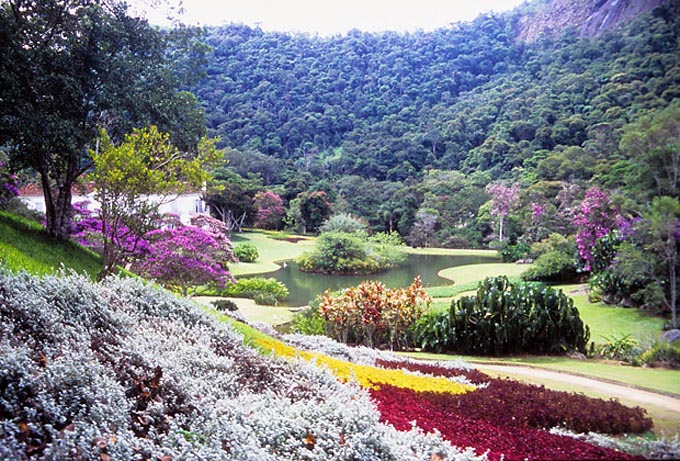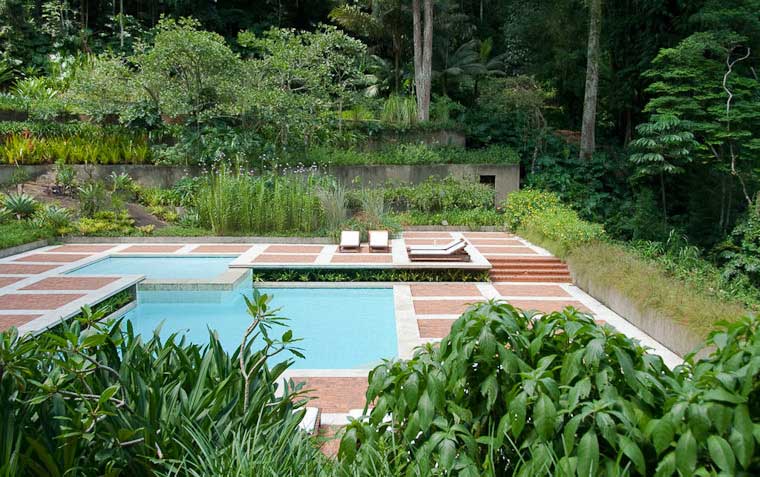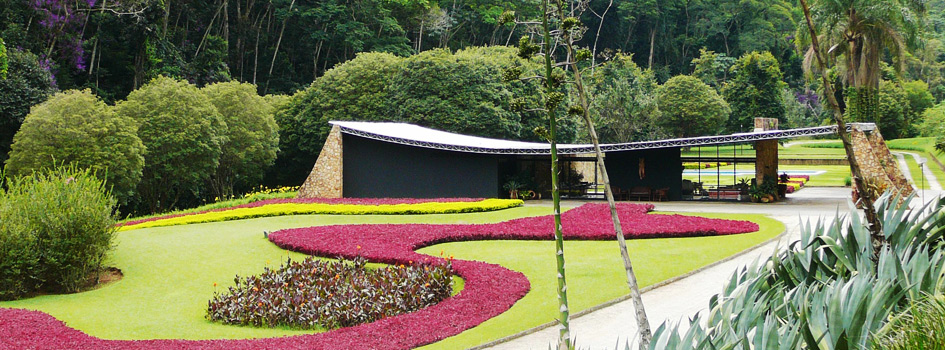<Back to Index>
- Mineralogist Johann Gottlieb Lehmann, 1719
- Landscape Architect Roberto Burle Marx, 1909
- Prime Minister of Yugoslavia Milan Stojadinović, 1888
PAGE SPONSOR
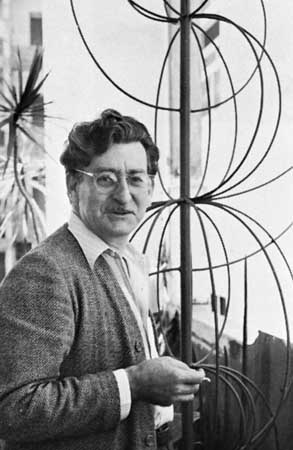
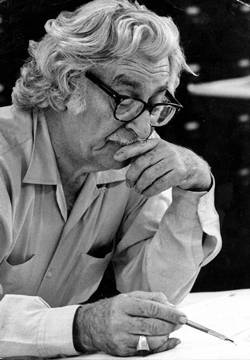
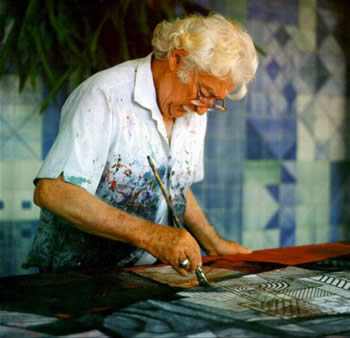
Roberto Burle Marx (August 4, 1909, São Paulo – June 4, 1994, Rio de Janeiro) was a Brazilian landscape architect (as well as a painter, print maker, ecologist, naturalist, artist and musician) whose designs of parks and gardens made him world famous. He is credited with having introduced modernist landscape architecture to Brazil. He was known as a modern nature artist and a public urban space designer.
Roberto Burle Marx's father was an emigrant from the city Trier in Germany. His mother was raised from an upper class family in Brazil. Burle Marx's first landscaping inspirations came while studying painting in Germany, where he often visited the Dahlem Botanical Gardens and first learned about Brazil's native flora. Upon returning to Brazil in 1930, he began collecting plants in and around his home. He went to school at the National School of Fine Arts in Rio in 1930 where he focused on visual arts under Leo Putz and Candido Portinari. While in school he associated with several of Brazil’s future leaders in architecture and botanists who continued to be of significant influence in his personal and professional life. One of these was his professor, Brazilian Modernism’s Lucio Costa, the architect and planner who lived down the street from Burle. In 1932, Burle Marx designed his first landscape for a private residence by the architects Lucio Costa and Gregori Warchavchik. This project, the Schwartz house was the beginning of a collaboration with Costa which was enriched later by Oscar Niemeyer who designed the Brazilian Pavilion at the New York World’s Fair in 1939. Niemeyer also designed the Pampulha complex in 1942 which Marx designed gardens for.
In 1949 he acquired the 365,000m² estate Barra de Guaratiba (just outside of Rio de Janeiro). Burle Marx began taking expeditions into the Brazilian rain forest with botanists, landscape architects, architects and other researchers to gather plant specimens. He learned to practice studying plants in situ from the botanist Henrique Lahmeyer de Mello Barreto and established his garden, nursery and tropical plant collection at Guaratiba. This property was donated to the Brazilian government in 1985 and became a national monument. Now called Sítio Roberto Burle Marx, under the direction of IPHAN - Instituto do Patrimônio Histórico e Artístico Nacional / Ministério da Cultura, it houses over 3,500 species of plants. The house was rebuilt in a valley on the site of a garden house belonging to the original plantation estate.
Roberto Burle Marx founded a landscape studio in 1955 and in the same year he founded a landscape company, called Burle Marx & Cia. Ltda.
Much of his work has a sense of timelessnes and perfection. His aesthetics were often nature based, for example, never mixing flower colours, utilisation of big groups of the same specimen, using native plants and making a rocky field into a relaxing garden. He was very interested in each plant's character and what effect that has on the whole garden. He opened an office in Caracas, Venezuela, in 1956 and started working with architects Jose Tabacow and Haruyoshi Ono in 1968. Marx worked on commissions thoroughout Brazil, Argentina, in Chile and many other South American countries, France, South Africa, Washington D.C., and Los Angeles. Additionally his artwork can be found displayed throughout the city of Rio de Janeiro “it is an open - air museum of works displaying his unmistakable style, one wholly his own”. Roberto Burle Marx’s 62 year career ended when he died June 4, 1994 two months before his 85th birthday.
He spent a lot of time in the Brazilian forests where he was able to study and explore. This enabled him to add significantly to the botanical sciences, by discovering new rocks and plants for example. At least 30 plants bear his name. Marx was also involved in efforts to protect and conserve the rain forest from the destructive commercial activities of deforestation for bananas and other crops and clear cutting of timber.
Marx’s work “can be summarized in four general design concepts — the use of native tropical vegetation as a structural element of design, the rupture of symmetrical patterns in the conception of open spaces, the colorful treatment of pavements, and the use of free forms in water features”. This approach is exemplified by the Copacabana Beach promenade, where native sea breeze resistant trees and palms appear in groupings along Avenida Atlantica. These groupings punctuate Portugese stone mosaics which form a giant abstract painting where no section along the promenade is the same. This “painting” is viewed from the balconies of hotels, and offers an ever changing view for those driving along the beach. The mosaics continue the entire two and a half mile distance of the beach. The water feature, in this case, is of course the ocean and beach, which is bordered by a 30 foot wide continuous scallop patterned mosaic walk. Copacabana Beach is “the most famous in Brazil”.
Roberto
Burle Marx has received the following prizes, diplomas of merit and
honorary memberships: The landscape architecture prize at the 2nd
International Exhibition of Architecture (1953), title of Knight of the
Order of the Crown from Belgium (1959), Diploma d’Honneur in Paris
(1959), the Santos Dumont Medal of the Brazilian Government (1963), the
Fine Arts Medal of The American Institute of Architects in Washington
(1965), doctor of the Royal College of Art, London (1982), and an
honorary doctorate from the Queen of Holland. The Missouri Botanical
Garden awarded him the Greensfelder Award and the Kentucky Botanic Garden proclaimed October 14, 1985 in his honor.
